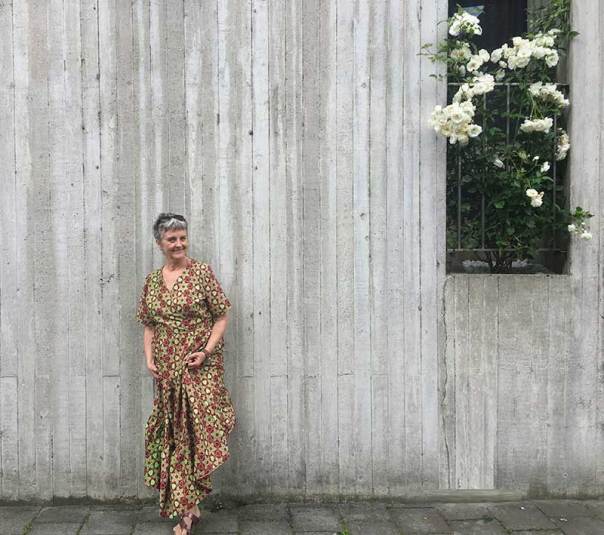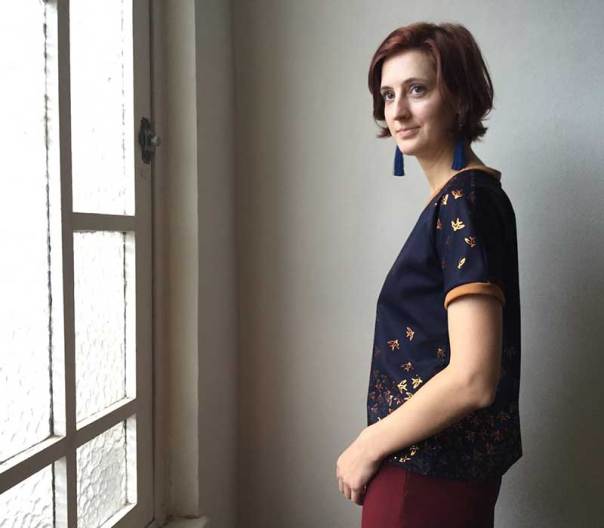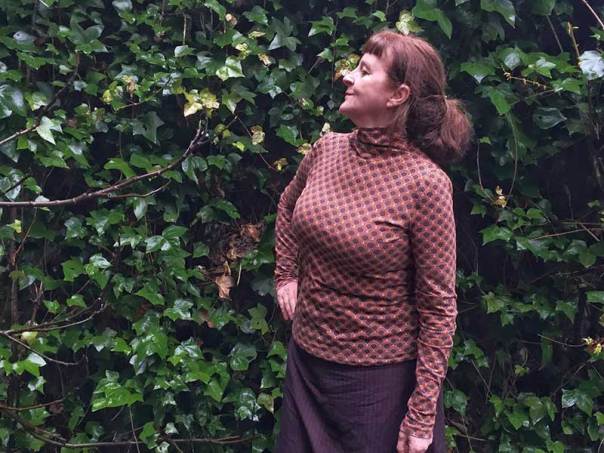26 December 2019 will forever be ingrained in my sewing brain because that’s the day I finished sewing my first ever self-drafted pattern! My first pair of culottes.

They are the first result of following three years of patternmaking lessons. Yeah, Yeah!, I hear you thinking: “Does it take three years of patternmaking lessons to come up with your first pattern?”. It did for me!
At our sewing school, we follow the Rundschau method of M. Müller & Sohn. It’s a patternmaking method that works with body measurements and calculated measurements. The previous years I learned all the theory about patternmaking. I drew a lot of patterns of skirts, dresses, blouses, coats, types of collars, and sleeves. But all these drawings were at a scale of 1:2. Now, this year is different because of the topic of the class is Making Pattern Trousers for yourself. And we started with culottes!

Culottes? Skirt trousers? Pantskirt? Palazzo Pants?
In Dutch, my native language, the first assignment for my trousers patternmaking class was to make a pattern for a “rokbroek”. Literally it means ‘skirt trousers’. Which is, in fact, a correct English term for this kind of garment, although less commonly used. When you do a search on Google, Pinterest, Instagram, etc. your result is a lot higher for culottes. And when I found the definition for culottes on the Collins dictionary: “Culottes: women’s flared trousers cut to look like a skirt ” I went for culottes as the name of my pattern.

How the Culottes pattern was born
The base of a culottes pattern is a skirt pattern. First, you make a straight skirt pattern based on your measurements and sew it in calico fabric. After a thorough fitting, you transfer all the needed modifications on your skirt pattern. Now you have a skirt block or sloper: a custom-fitted, basic pattern for a straight skirt. This master pattern is the starting point for the making of the culottes pattern. Here you see the difference between culottes and trousers. A culottes pattern comes from a skirt pattern.

From skirt to culottes
Start with tracing your skirt block on pattern paper with all the necessary lines. Depending on your body type and taste you reduce 1,5cm at the centre back and front at the waistline. This is helpful to make one dart of the two darts both in the front and back.
As I mentioned hereabove the Rundschau method uses body measurements and calculated measurements. To determine the crotch level you use 1/4 of your hip-width + 2 cm. To determine the position of the inseam for the front you take 1/8 of your hip-with and for the back 1/8 hip-with + 2,5 cm. Now you can draw the curved lines of the centre front and centre back.
Again you sew it in calico fabric and after a thorough fit, you can transfer the necessary modifications on your pattern. Tadaa! Here is your culottes sloper.
My Culottes pattern
Now that I had my sloper I needed to use it as a starting point for the design model I wanted. The assignment was to let you get inspired by a model of a rtw culottes. And now all the knowledge I gathered the previous years came in handy.

To create the width in the legs I closed the darts. Then I cut off a waistband of 5,5 cm. After drawing a slant pocket on the front I inserted a pleat of 28 cm. This makes a leg width of 168 cm.

My culottes pattern has 6 pattern pieces. A front and back leg, a front and back curved waistband, a pocket, and a pocket lining. As I drew the pattern pieces directly on the pattern paper I did not have to glue countless pdf-tiles! One of the perks of making a pattern yourself. A minor disadvantage is that generally, you don’t draw the seam allowance on your pattern, so you have to keep that in mind when cutting your fabric. The upside is that t

The Culottes Fabric
I bought this piece of dark brown shiny fabric at my favourite fabric stall at Castel del Piano. If you are a regular reader of my blog then you will know that I found already some real treasures there.

At this fabric stall, you can only buy remnant pieces of unidentified fabric. So I don’t know what kind of fabric this dark brown shiny fabric is. It’s a middleweight fabric that has some structure, due to woven stripes. The colour changes a lot with the light. It goes from gold to dark chocolate. But it only cost 5€ and the piece was big enough for my pattern. And it sewed like a dream. So it was a perfect piece to make my test culottes which came out very wearable

The sewing process
As I drafted the pattern myself there were no sewing instructions available! Sewing culottes is the same as sewing trousers, which is not that complicated. I sewed already some trousers and jumpsuits so I have enough confidence to follow my own order of construction.
- Mark the pleat fold lines at the waist and the hem. I used tailer’s tacks and I also marked the front waistline. I might get a little overboard here but hey I had to show it to my sewing teacher!

- Stitch a small non-elastic ribbon in the seamline of the pocket line of the front leg. Make the ribbon 4mm shorter than the pocket opening this prevent stretching it.
- Sew the pockets. After sewing the pocket lining understitch the seam to prevent them from peeping up.
- Fold and press the pleats. Affix the pleats in the seam allowance of the front.
- Stitch both seams of the legs.
- Turn one leg to the right side and slide this leg in the other leg right sides together. Now you can stitch the crotch seam.
- Sew on the (interfaced) waistband.
- Put in the blind zipper.
- Finish the inside of the waistband with the waistband lining.
- Hem the trouser legs!
Et voilà, les nouvelles culottes sont arrivées!

Conclusion
There is only one conclusion. I’m SEW proud with myself that I was able to see a garment somewhere and could recreate that for me from scratch!
Will I sew more of these culottes? Of course, I will. In fact, I’m working on one now with the fabric I bought especially for this pattern.
And you? Do you have experience with patternmaking?






















































































 For the collar and sleeve cuffs, I used a strong black rib knit with small golden speckles.
For the collar and sleeve cuffs, I used a strong black rib knit with small golden speckles.

